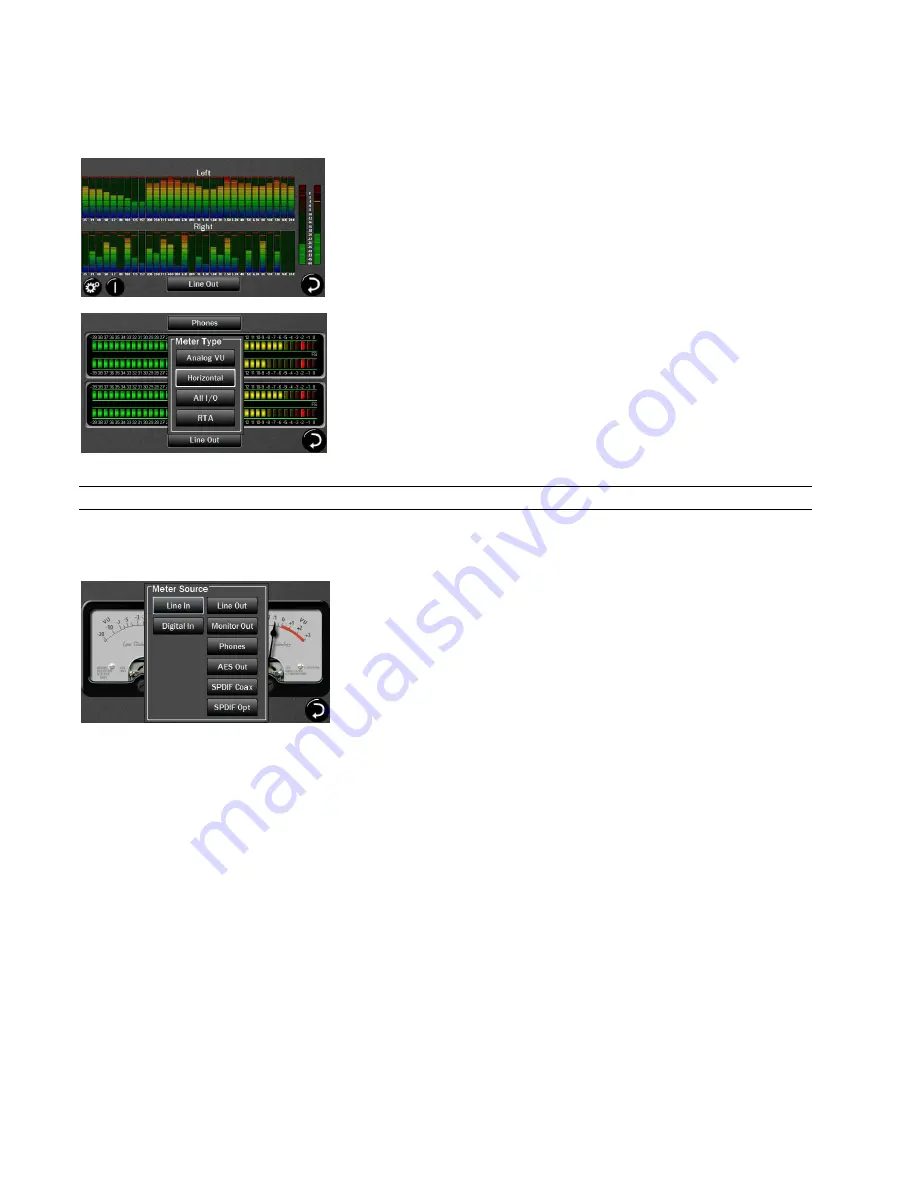
Page 12
The stereo 30 band Real-time Spectrum Analyzer (RTA) is a very useful diagnostic and reference tool. The Hilo RTA computes the
RMS energy in 30 frequency bands for left and right channels of a selected stereo input or output every sample period. This is a
brilliant tool for mixing, mastering and even system troubleshooting. The RTA display can be customized with several parameter
controls. Tapping the icon, brings up the RTA parameter settings window. Options are:
Peak Hold Reset
: The Peak Hold controls can be set to Auto, or Manual. In Manual
Mode the user can press “Reset” to capture the peak levels at any point in time.
Color Scheme
: Allows the display to be toggled between the mono-chromatic
“standard” display, and the multi-chromatic “Rainbow” display.
Scale
: Allows boosting or cutting the program material in 3dB increments to get the
best meter reading. Amount of cut or boost is displayed in the text to the right of the
buttons. There are also +3 and -3 buttons on the right side of the display for the same
purpose.
To change the meter type, tap the meters on the screen, and the Meter Type menu will
appear:
Touch on the type of meter you would like to see. The new meter will instantly
appear. If no selection is made, clicking anywhere on the Touch Screen outside of the
menu will cause the menu to close.
3.2.1
Choosing the Meter Source
You can select any Input or Output Source to be shown on the Analog VU, Horizontal and RTA Meters.
3.2.1.1
For the Analog VU Meters:
Touch the Monitor Source Selection button that is centered at the bottom of the
screen. Before touching the button, it will show the current selection. A Pop-up
will appear with two sets of input sources on the left and six sets of output
sources on the right.
Tap on the input or output source you need. The meter will reset and the Pop-up
will close. The Monitor Source Selection button now shows your new selection.
The Pop-up will remain on the screen until you either make a selection, or tap
outside of the menu in order to close it.
3.2.1.2
For the Horizontal Meters:
This is the same process, but you can select different sources for each meter pair.
Touch the Monitor Source Selection button that is centered at the top of the screen for the upper meter set or the Monitor Source
Selection button that is centered at the bottom of the screen for the lower meter set. Before the buttons are pushed, they will show the
current meter selection. A Pop-up will appear with two sets of input sources on the left and six sets of output sources on the right.
These are the same options as for the Analog VU meters. Tap on the input or output source you need. The meter will reset and the
Pop-up will close.
Use the same procedure for the other meter set. The Pop-up will remain on the screen until you either make a selection, or tap outside
of the menu in order to close it.
3.2.1.3
For the RTA Meters
Tap on the input or output source you need. The meter will reset and the Pop-up will close. The Monitor Source Selection button now
shows your new selection. The Pop-up will remain on the screen until you either make a selection, or tap outside of the menu in order
to close it.
3.2.1.4
For the All I/O Meters
With the All I/O meter page, no selection is needed as all input and output sources are shown. The All I/O page is useful for different
reasons. When setting up your routing (explained later) this page gives you a global view of what input channels are active and which






























